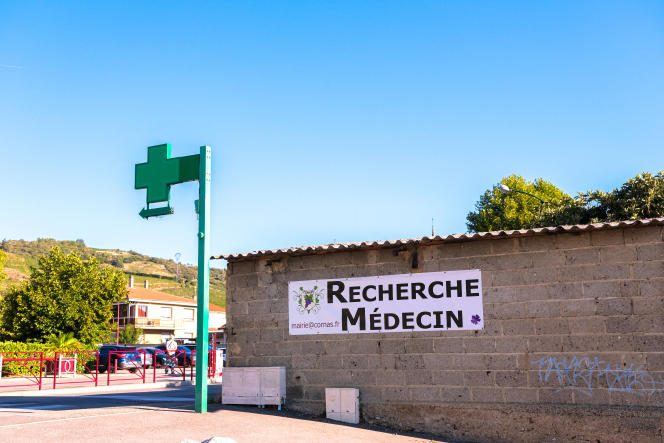He is one of the “700,000”, these patients with long-term illness, without a doctor, whose care the government has made a priority. Or rather, he was one of them: in mid-May, Ramdane Sali, 54, was contacted by the Primary Health Insurance Fund (CPAM) of Val-de-Marne, the department where he resides , to be offered a referring general practitioner.
“I am calmer now”, he simply concedes, he who lives in Villejuif on his disability pension, after three heart operations. For eighteen months, despite his heart problems, the epilepsy from which he suffers and the need, he says, for a “psy follow-up”he had to do without. “One day, I was told that my doctor had left, first I saw his replacement, and then, less and less…” She consultations with specialists at the hospital, his visits to his cardiologist, as a liberal, continued. “They too were worried that I no longer had ‘my’ doctor. And their concern, it worried me…”
The career of Aïcha (she requested anonymity), 76, is not very different: a general practitioner who retired a year and a half ago, a substitute doctor (” mays nevers the same “she says) renewing her prescription every month to treat her diabetes, her asthma, her hypertension… But no single interlocutor, apart from a medical secretary. “Every time I called, she kept telling me ‘we can’t do better’. » For this resident of Créteil, too, the“pairing” with a general practitioner, orchestrated by the CPAM, ended favourably. And they are not alone.
Since the launch of the approach, mid-March, in the Cristolian offices of the Health Insurance, by the Minister of Health, François Braun, some 680 ” case “ individuals have thus found a way out in the Val-de-Marne. In Seine-Saint-Denis, a neighboring department, there are already several thousand – 5,800 in April. “All the CPAMs are committed to this action”, we underline at Medicare, without yet delivering an overall assessment.
A “lace work”
This process is implemented in several steps. The funds wrote to patients first, then to general practitioners, first targeting those who, during the year, had been able to see the same chronic patient three times without a declaration from the attending physician. Avenue de Ségur, it is the most important operation “to go to” that has taken place, apart from the vaccination campaigns against Covid-19. On the ground, we evoke, more modestly, a “lace work”, in the patient-doctor relationship.
You have 66.13% of this article left to read. The following is for subscribers only.
